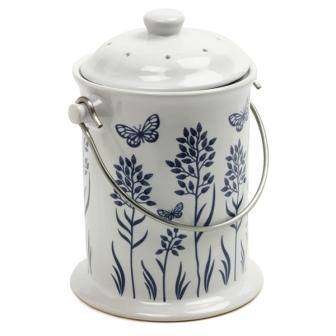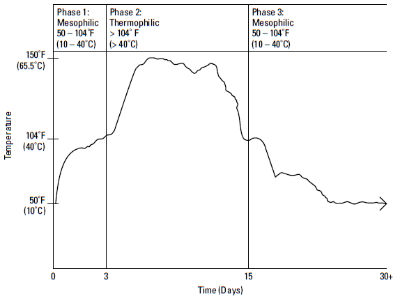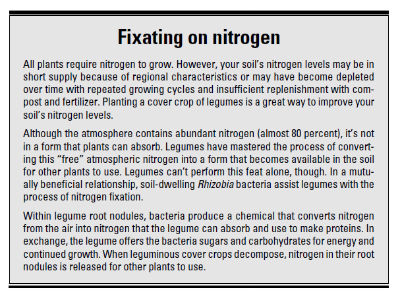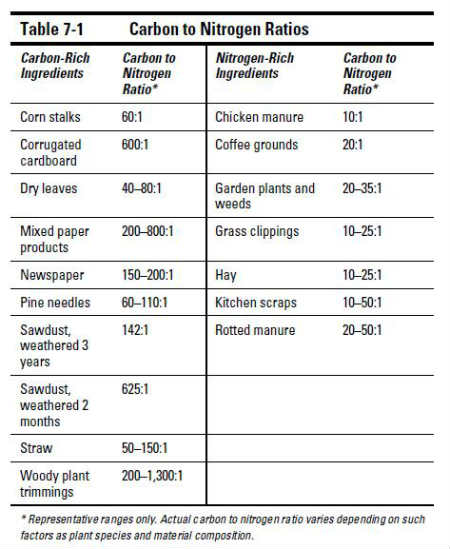In ground, on the ground, in a bin, on your counter top—if it was once living, chances are you can compost it. There is so much great information in this little book that it will really make you want to start reclaiming so many of those “waste” items.

Cathy Cromell definitely has the bona fides to write such a work. Moreover, she has the correct approach to gardening by starting with the soil. And she is in very good company when she talks about soil with the likes of Joel Salatin bucking the trend of those who advocate for “plant food.” You know “plant food,” it comes in a bag, has a price tag so that you can put it in the shopping cart and feel good about hauling it home.
If you take the other course of action in building the soil first, rest assured your plants will have everything they need. As a matter of fact if you walk into the forest, kneel down and pick up a scoop of chocolatey brown coffee-ground like soil (or humus), you are getting to see the natural order at work. Nature seldom wastes anything and is constantly composting. “Compost is a mixture of decayed and decaying organic matter that improves soil structure and provides nutrients for plants” (Cromell, 2010).
I could go on and on about specifics in this book that I liked so much. The graphs, pictures and side bars in this book are a great means to tell the story of how nature produces topsoil. I contacted Wiley Publishing, Inc. to get permission to reprint the following three graphics from the book to help give you the scope and expertise captured so well here.
1. On page 43, we see the different phases of decomposition require different organisms to accomplish that. They each work in their own temperature range. Amazing! (Cromell, 2010).

Excerpt from Composting For Dummies®, posted with permission from John Wiley & Sons, Inc.
2. Great sidebars throughout the book. Here is one on page 171 that I like particularly well that talks about the importance of Rhizobia bacteria. They are the secret weapon of legumes to pull valuable nitrogen out of the air and convert it into a form that plants can use (Cromell, 2010). The natural order is simply fascinating!

Excerpt from Composting For Dummies®, posted with permission from John Wiley & Sons, Inc.
3. The biggest and most valuable thing that I learned from the book is the Chapter 7 covering the relationship between Carbon and Nitrogen. I knew that they were both important, but I did not know how much that they depended on each other (30:1 to be precise). This chart on page 108 is an excerpt of just how rich with useful facts this book is. (Cromell, 2010).

Excerpt from Composting For Dummies®, posted with permission from John Wiley & Sons, Inc.
In the classic For Dummies style of top ten lists, here is Wilson’s top ten things about this book:
10. Composting is one of the least expensive hobbies that you can do (p. 15).
9. Classic 5th Wave comics throughout the book.
8. Compost takes billions of participants (primary, secondary and tertiary consumers) all working together (p. 31).
7. You can compost with children (p. 14).
6. If you can construct a container—you can compost. Failing that, you can just stack it up on the ground and you can still compost (p. 77)!
5. Compost needs 35-40% moisture. Ants like very dry conditions and flies prefer very wet conditions—the upside is that if you like the benefits of compost (good soil) and you also like chicken, but you do not want to measure the moisture, chickens like both flies and ants (p. 73-74).
4. Compost (as a process) is extremely observable, and is a great project for science fairs and home schoolers (p. 38).
3. If done properly, compost should not smell (p.33).
2. Worms, the more you know about them the more you love them. They actually get their own chapter (p. 149).
1. Compost happens—you can help on the time scale, but Nature is ultimately driving.
It is wintertime folks, not much gardening to be done these days. Other than daydreaming with seed catalogues, there is not much else that can be accomplished. The good news is that the compost process happens year round, albeit much more slowly in winter. This book is a quick read and a great resource.
Please check back on Friday so that you can help me welcome the author of Composting for Dummies Cathy Cromell as she stops by to chat with us!
Wilson
Pro Deo et Patria
Cromell, C., & Association, T. N. G. (2010). Composting for dummies. (p. 7). For Dummies.
Ibid. (p. 43).
Ibid. (p. 171).
Ibid. (p. 108).
test
Photo Credits:
Composting for Dummies book cover, Wiley Publishing, Inc.
Humus, photo by moptop8
Leaves, photo by mHdZdfM
